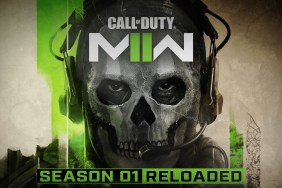Now you can watch miniature troops die on your PS3 or Vita.
The regularity of mobile ports increases with each year and Tiny Troopers Joint Ops joins the club with its debut on PlayStation platforms. The game's mobile roots stand out, namely in its interface, but Tiny Troopers still delivers a decent arcade shooter experience. It lacks depth and fails to reach great heights, but the content is there and the core mechanics hold up well on a mission-to-mission basis.
Tiny Troopers attempts to tell a story with a few small cutscenes and mission descriptions, but it deals in rote plot points and fails to make any impact whatsoever. That's not the end of the world for a dual-stick shooter, but it signifies a lack of personality. The game throws in a few jokes and sports colorful visuals that contrast its tales of combat, but they do little to give the game an identity. Instead, these elements act as a lifeless vehicle to deliver a series of missions. At least the missions themselves offer some satisfaction.
At its core, Tiny Troopers is a basic dual-stick shooter in which you move with one analog stick and shoot with the other. Sounds simple and it is—in fact, the opening tutorial players have to complete takes a total of one or two minutes. It doesn't even feel like much of a tutorial, but the snappiness allows players to jump right into the action immediately. Missions start small—kill a couple of enemy units and reach a point on the map—but eventually they balloon into larger scale encounters with far more enemy troops and various buildings to destroy. All of this takes place in two separate campaigns, each of which features quite a few different missions; Tiny Troopers Joint Ops may be a mobile port, but the amount of content in the game stands out as a pleasant surprise.
Players can purchase items in the middle of missions with command points, but I rarely did so because I wanted to save those points for new equipment and unit purchases after each mission. Sure, I can buy a few grenades to help me destroy a bunker, but I'd much rather save those points and purchase a scope upgrade for my entire squad. In addition, individual characters level up after successful missions and in turn perform better in combat. If you let one die in battle and don't revive them after a mission, they're gone and a replacement arrives. These two systems—the command center and squad deaths—establish a level of persistence that makes the game feel like a more complete experience.
The experience wears thin in a short amount of time though. Missions grow over the course of the game but still deal in predictable objectives and familiar environments. Long play sessions quickly become tedious, and its status as a mobile port emerges. It's a less glaring issue on the Vita, the platform I played the game on, because the handheld lends itself well to short 10-minute sessions here and there. But even that release comes with its own set of issues, as the game uses the analog sticks and simultaneously requires players to use the touch screen for special attacks like grenades and rockets. I'd often fumble in the transition and pay the price because of those control issues.
Tiny Trooper's few problems fail to completely derail the experience and it still works as a solid mobile port. I doubt it will make any real lasting impression with most players, but I had fun with some of the missions and grew attached to a few of my squad members as they leveled up over the course of the game (and then promptly died, because war is hell). Tiny Troopers may be a middle-of-the-road experience, but sometimes that's just fine.
Code provided by publisher. Review based on PlayStation Vita version. Also available on PlayStation 3.
-
Quite a few missions
-
Missions can be repetitive
-
Lacks personality
-
Establishes persistence
-
Level up individual squad members... and then watch them die
-
Control issues on the Vita










